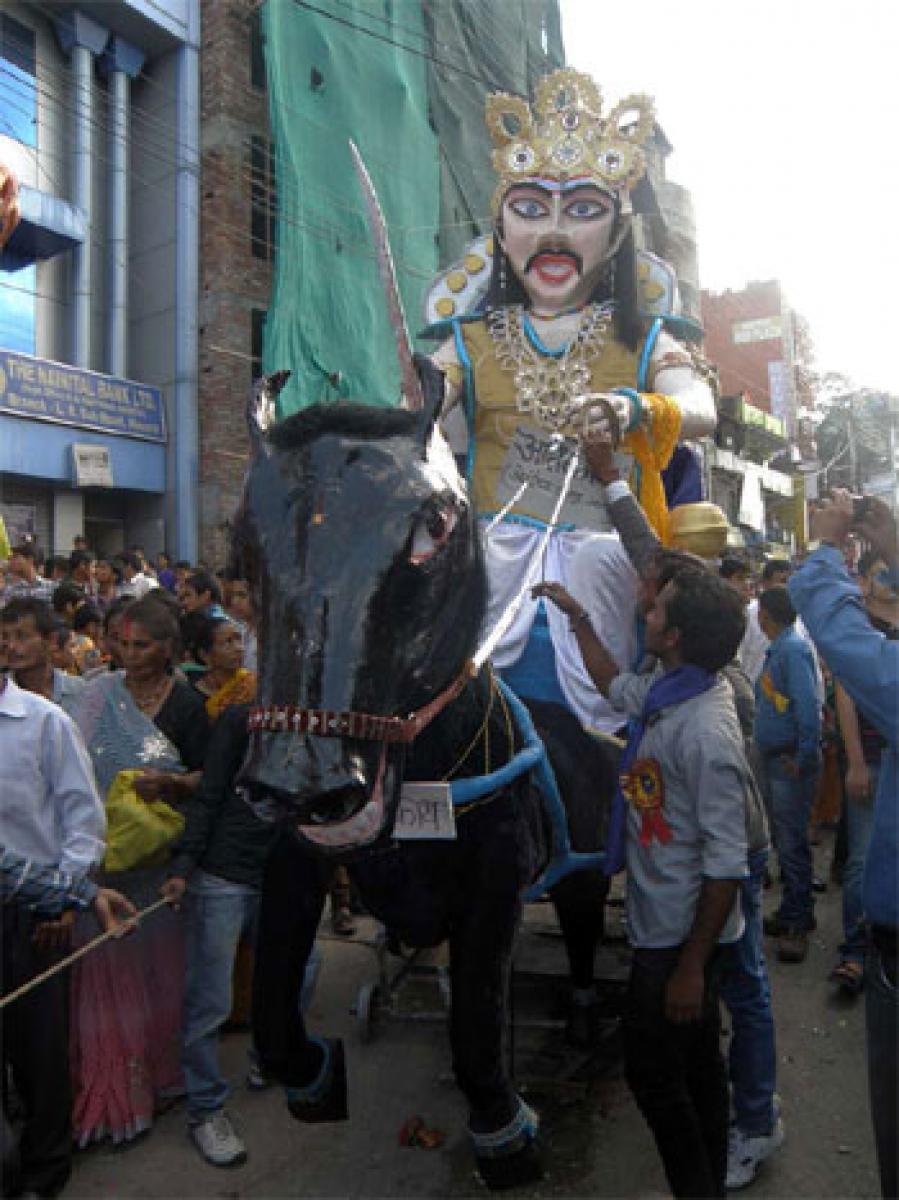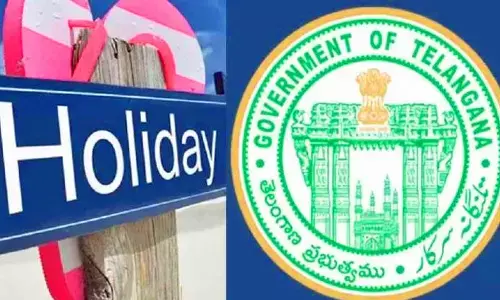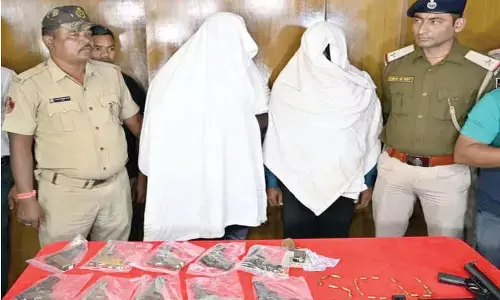In a league of its own

A gigantic form of Meghnad (famous son of the demon king Ravana) glared at us out of his bloodshot eyes as we pocketed a handful of groundnuts and hurried towards the Almora Ramlila grounds to capture the most desired vantage points.
.jpg)
One can visit Almora during October when the whole town gears up for Dussehra celebrations, and stages an extremely colourful and memorable Ramlila, the dramatic re-enactment of life of Lord Rama
A gigantic form of Meghnad (famous son of the demon king Ravana) glared at us out of his bloodshot eyes as we pocketed a handful of groundnuts and hurried towards the Almora Ramlila grounds to capture the most desired vantage points.
The show was scheduled to begin soon and we didn’t want to miss even an inch of it. We had been assured by locals that entry was free and seat securing was strictly on first come first serve basis. Hence understandably we were in a hurry.
Almora, a salubrious hill-station is well-known for being a cultural hub of Kumaon. The place is especially worth a visit during October when the whole town gears up for Dussehra and stage Ramlila. Almora’s Kumaoni style enactment of Ramlila has also been recognised by UNESCO as one of the most representative Ramlilas.
A unique aspect of the Dussehra celebrations in Almora, is the tradition of burning effigies of not only the demon king Ravana but also a host of other rakshashas or demons who feature in the epic Ramayana.
During Dussehra these larger than life effigies of demons are paraded across the town with much fanfare by traditional dance troupes. As Almora is settled on a ridge, the houses – traditional stone houses topped by slanting roofs are arranged along both sides of narrow passages or gallis.
During Ramlilla, these narrow lanes turn into an open air theatre. Hence, if you are in Almora during Dussehra, it would not be uncommon to run into a jovial Surpanakha or rub shoulders with a sleepy Kumbhakarna (both demons depicted in the epic Ramayana).
The whole show culminates in a dazzling show of fire-crackers as the effigies are put to fire. Over the centuries Almora has been coveted by many suitors – the Chand Kings established their capital here; the Gorkhas ravaged it during early 19th century and the British fell in love with the pleasant climate and flocked here during the warm summer months.
The Almora Ridge also promises grand views of the Himalayas. In the town, if one looks closer, one can find traces of decaying fort walls lost amidst traditional houses with exquisitely carved wooden windows and sloping slate roofs.
 The residents of Almora passionately love their bazaars – Lala, Karkhana, Johari, Malli and Paltan to name a few - and during Dussehra celebrations these markets brim with excitement and are the hub of all festivities.
The residents of Almora passionately love their bazaars – Lala, Karkhana, Johari, Malli and Paltan to name a few - and during Dussehra celebrations these markets brim with excitement and are the hub of all festivities.
The mountain-tops are illuminated by the meek winter sun while a stinging wind roams audaciously in the shadow of the razor-sharp cliffs. Bordered by the river Kosi, the serpentine road leading to Almora races past sleepy hamlets like Khairna and Garampani where humble eateries serve hot pakodas and yummy aloo paranthas to the hungry crowds.
As the demanding ascent tapers off to a ridge, on which is sprawled the town of Almora, it would be advisable to shed the trepidations that urban dwellers are usually full of and rejuvenate in the easy-going attitude of this Himalayan hill-station.
In addition to the Dussehra celebrations, Almora is also the perfect place for a nature lover to escape the hustle and bustle of city life and relish the tranquility offered by the surrounding forests of pine.
Walk to the temple of Golu Devta, around 7 to 8 kms from the town, and be bemused by scribbled government stamp papers pinned alongside thousands of bells. People who have faced any sort of injustice leave an application in the temple and Golu Devta, a King in Kumaon famous for his fairness,
is believed to dispense his own justice- those who feel their prayers have been answered come back to the temple, remove their application and donate a bell instead. One could also stroll to Crank’s Ridge and enjoy the unhindered views of the imposing Himalayas,
especially Nanda Devi –the patron goddess of Uttarakhand. Almora even has a beautiful temple dedicated to the deity. Crank’s ridge was a popular destination during the 1960s and 1970s for the hippie crowd traveling to India – a few of them even settled here, so don’t be surprised if you find seemingly foreign kids blabbering in a pahari accent.
And if you feel exhausted after wandering in the hills, return to the town, seek out a quiet corner in Bright End Corner and laze in the afternoon sun while sipping the strong and extra sweet pahari chai.
Brewed in undulated milk, it is sure to reenergise you and make you forget all your worries. Revel in the beauty of the Himalayas, its cuisine and culture because once you witness the snowy peaks endowed with a golden hue during sunset, you will never wish to leave this place and return to the plains!
fact file
Location: Almora is a picturesque hill station in Uttarakhand
Nearest Rail head: Haldwani (90 Km)
Accommodation: Almora boasts of a variety of accommodation for all pockets. The guest houses run by GMVN (Garhwal Mandal Vikas Nigam) are both comfortable and pocket friendly. Visit www.gmvnl.com/
Cuisine: Bal Mithai (brown chocolate like fudge made from khoya and coated with sugar balls) and Singodi (flavoured khoya wrapped in oak leaves) are sweets that are a specialty of Almora – drop in at Khim Singh’s shop in the bus station to satisfy your cravings. Khechua is another khoya based sweet that is best enjoyed during cold winter evenings with a steaming cup of tea.
Activities: The colorful Dussehra festivities can be aptly complemented by visits to quaint mountain villages around Almora.
By:Sriparna Saha















